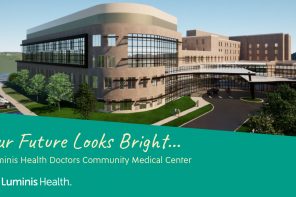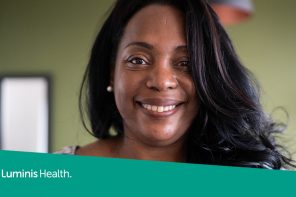Lena Dunham. Whoopi Goldberg. Susan Sarandon. These are just a few of the high-profile women who have publicly discussed their experience living with endometriosis. Endometriosis is a gynecologic condition that occurs when tissue that normally lines the inside of the uterus grows elsewhere in the abdomen.
Endometriosis is very common, affecting as many as 10 percent of American women of childbearing age, or more than 6.5 million women in the United States. While the cause of endometriosis is not clear and there is not a defined gene, there may be a familial link. According to a 2008 study out of Yale University School of Medicine, women with an affected mother or sister have as high as a 10-fold increased risk of developing endometriosis.
Although some women don’t experience symptoms with endometriosis, many report intensely painful menstrual cramps and pain during sex. Over time, untreated endometriosis can lead to chronic inflammation and scarring in the abdominal cavity, resulting in debilitating pain beyond the menstrual cycle. Severe endometriosis can involve other organs such as the bowel and bladder, causing non-gynecologic symptoms such as pain with bowel movements and urination.
Endometriosis is traditionally diagnosed by confirmation of implants seen in surgery. However, it can often be diagnosed on symptoms and physical exam alone.
Endometriosis before and during pregnancy
One of the biggest concerns women with endometriosis have is whether they can get pregnant. There is a strong link between endometriosis and infertility. As many as 40 percent of women struggling with infertility are diagnosed with endometriosis. If you know you have endometriosis, it is important to meet with an infertility specialist prior to getting pregnant because you may require treatment of endometriosis before any fertility treatments.
Treatment must be a multi-pronged approach
It is important to understand that there is no “silver bullet” cure for endometriosis. For women who receive a diagnosis of endometriosis later in life, they often develop a hypersensitivity to pain, which is not easily treated with medication or surgery alone. Successful treatment of endometriosis requires a team of specialists in both surgical and nonsurgical fields.
- Drug treatments: Medicine for endometriosis should tackle one of two issues: ovulation and inflammation. Supplemental hormones, most commonly in the form of birth control pills, suppress ovulation, which suppresses the endometriosis flare during menstrual cycles. There are also safe hormonal alternatives, such as Depo-Provera injections or the hormonal IUD. Over-the-counter medications such as ibuprofen suppresses inflammation and provides pain relief. For patients with more severe pain, certain medications can damper the pain signals in the brain. It is important to note that opioids often do not help endometriosis pain and should be avoided.
- Surgical treatments: I often do not recommend surgery as the first-line treatment for endometriosis. However, if the pain is severe and medication is not working, surgery may be the next option. There are many surgical options with endometriosis, like removing ovarian cysts (cystectomy), removing endometriosis implants, removing one or both ovaries (oophorectomy), and removing the uterus (hysterectomy). What kind of surgery you need will depend on your age, health status, whether you intend to get pregnant in the future and many other factors.
- Pelvic Floor Physical Therapy (PFPT). Many patients with chronic pelvic pain due to endometriosis are excellent candidates for pelvic floor physical therapy. With chronic pain, the muscles in the vagina often tense up, resulting in significant pain during sex or with movement. Pelvic floor physical therapy is a safe and effective co-treatment for pelvic pain and should be offered to women who exhibit signs of vaginal muscle tightening or tenderness on exam.
Be your own advocate
Although there is no specific way of preventing endometriosis, there are ways you can impact the condition and manage your symptoms. The first thing I always tell women is not to ignore the pain. Pain that starts only during menstrual cycles can eventually become worsened or become constant due to amplification of your brain’s interpretation of pain. This can be very difficult to treat.
Second, don’t be afraid or embarrassed to seek help from an expert. If surgery is recommended for you, always get a second opinion before proceeding. Be an advocate for yourself, your body and your life.
Finally, get support and talk with other women who also live with endometriosis. The more women who speak up about endometriosis, the more attention this condition will get and the more we can advocate for better resources for women and healthcare providers.
Jessica Ton, MD, is a specialist in minimally invasive gynecologic surgery with Anne Arundel Medical Group (AAMG) Gynecologic Specialty Surgeons. To schedule an appointment with her, call 443-481-3493. 




